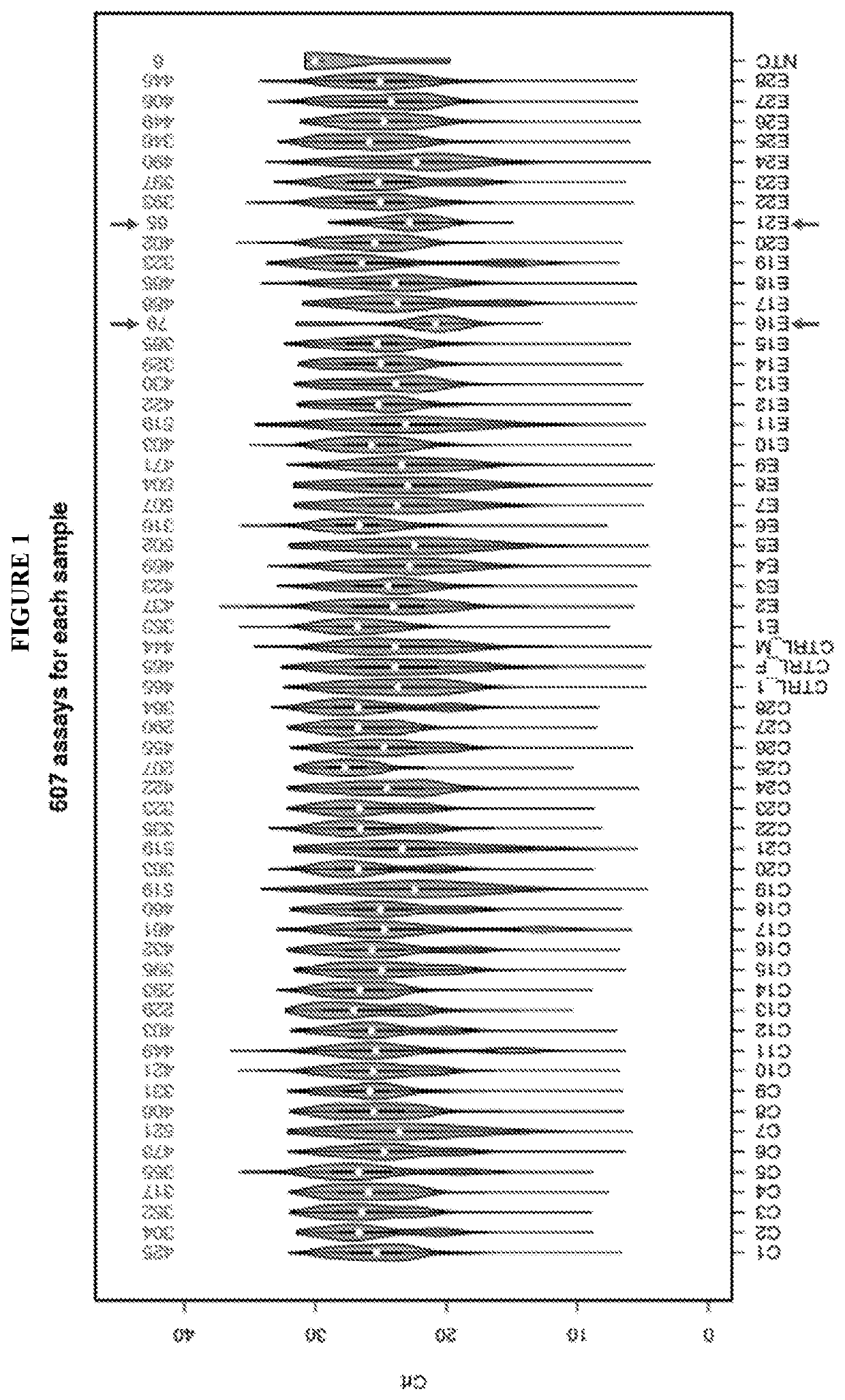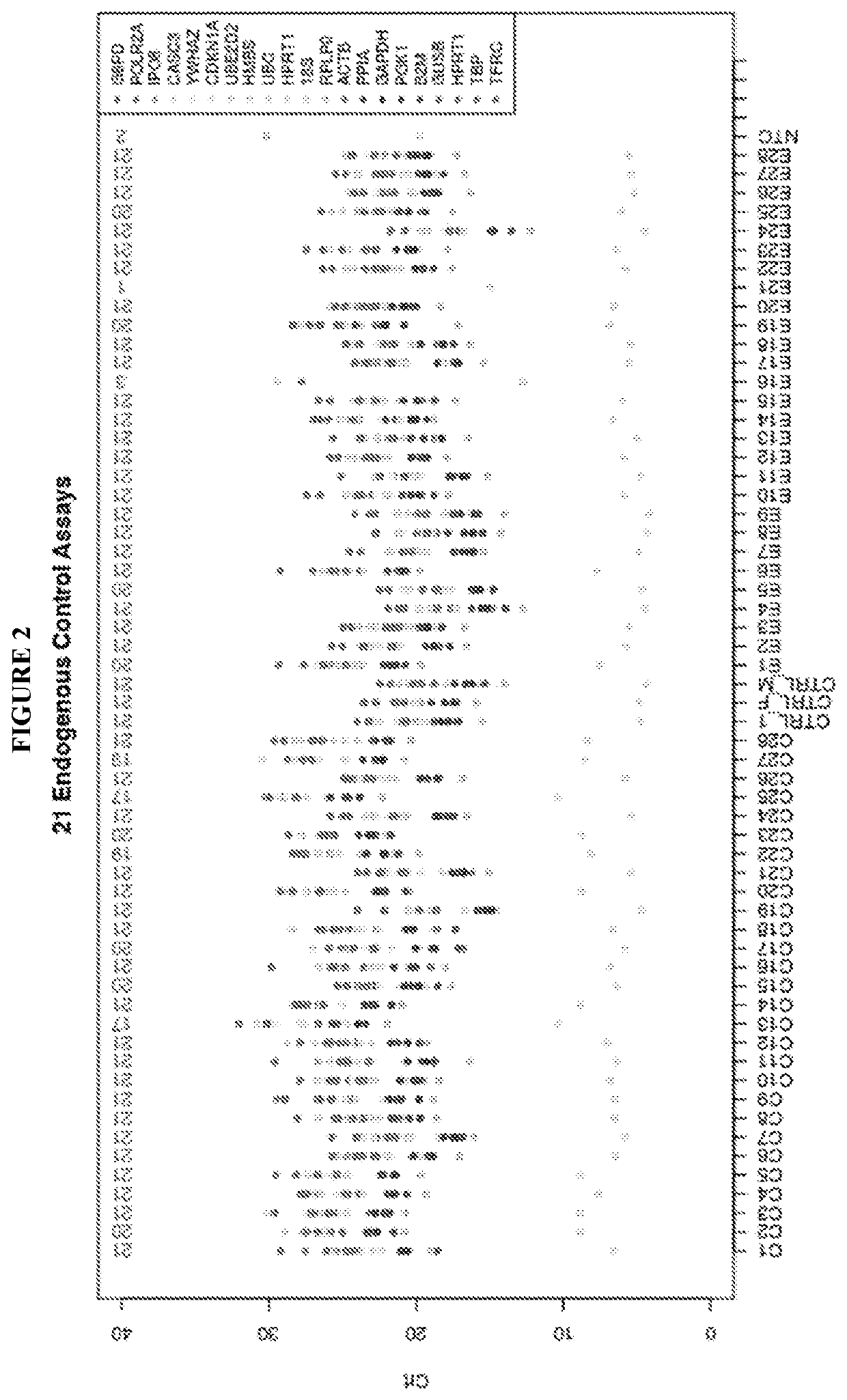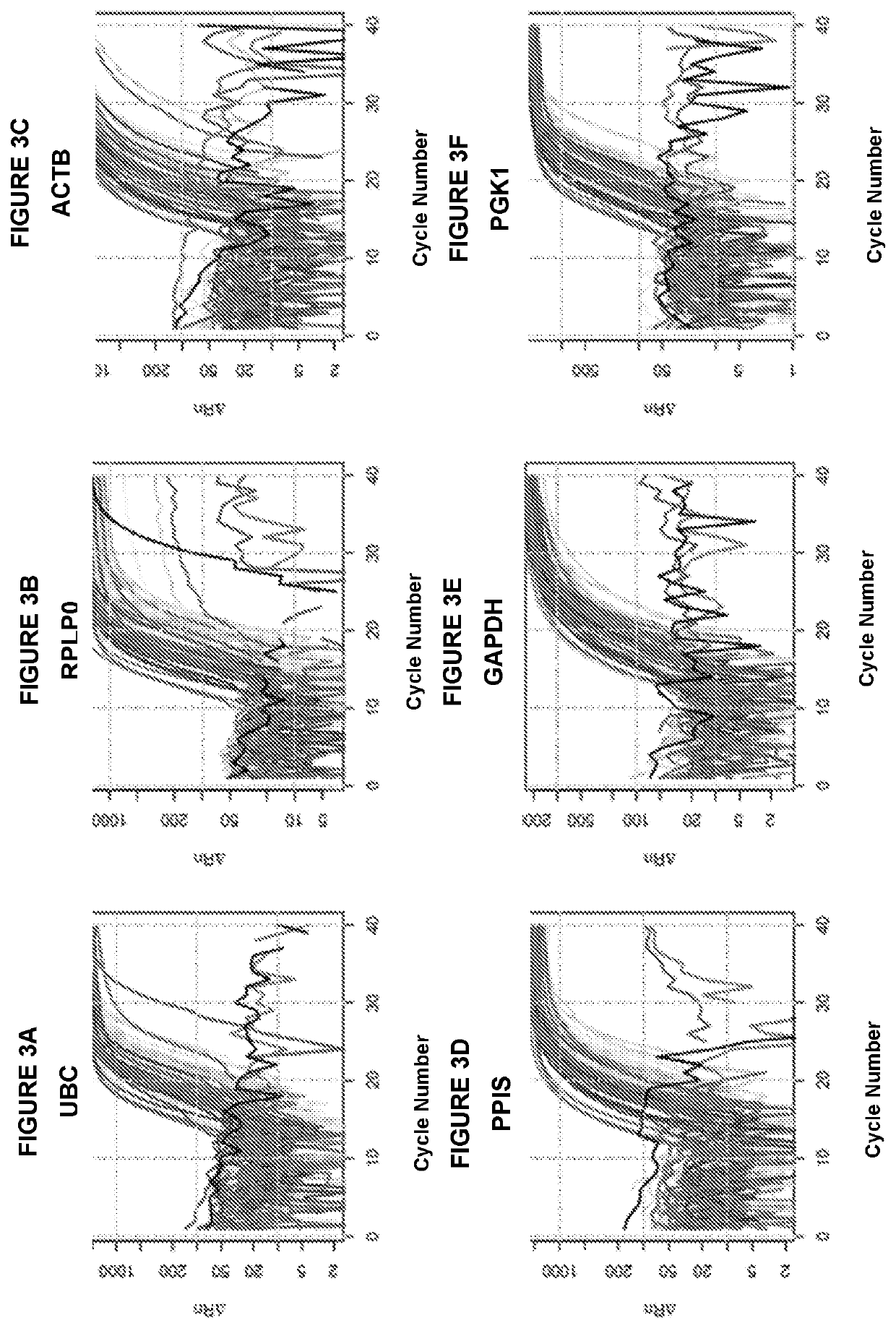Profiling microvesicle nucleic acids and uses thereof as signatures in diagnosis of renal transplant rejection
a technology of microvesicle nucleic acids and signatures, which is applied in the field of using microvesicle rna signatures, can solve the problems that urine cells are not able to reliably and successfully discriminate between patients
- Summary
- Abstract
- Description
- Claims
- Application Information
AI Technical Summary
Benefits of technology
Problems solved by technology
Method used
Image
Examples
example 1
dy of Urinary Microvesicle Signature for the Diagnosis of Human Kidney Transplant Rejection
[0087]The studies presented herein were run on a pilot of 28 patients, and as detailed herein, the microvesicle RNA signatures, also referred to herein as the urinary microvesicle RNA signature, the exosome RNA signature, and / or the urinary exosome RNA signature, perfectly clustered the patients with rejection. In the studies presented herein, the microvesicle RNA signature is a microvesicle mRNA signature.
[0088]In the studies presented herein, 28 samples from 24 patients were used. Four patients with two samples each for two visits were used. Each sample was processed to extract RNA from cellular fraction or microvesicle fraction. The demographics of the samples were as follows: eight female samples and 20 male samples. Fourteen patients had transplant rejection, and fourteen patients had no symptoms or other indication of transplant rejection. In addition, three in-house control samples were...
example 2
and Validation of a Urinary Exosomes mRNA Signature for the Diagnosis of Human Kidney Transplant Rejection
[0101]Patients with end stage renal disease usually undergo transplantation, however, as many as 10-15% of these patients develop acute kidney rejection. Methods for monitoring clinical rejection include increase in serum creatinine and urinary protein secretion. These methods are not very accurate and may not reflect subclinical rejection. Currently, the patients are often monitored by repeat biopsies that may result in increased complications and cost. An accurate, non-invasive method would allow for earlier diagnosis and minimize the amount of immunosuppression needed to manage these patients. Extracellular vesicles such as exosomes (also referred to herein as microvesicles or the microvesicle fraction) are a promising new platform for biomarkers and can be used to monitor RNA and protein expression. Exosomes shed from the rejected kidney into the urine are likely originating...
PUM
| Property | Measurement | Unit |
|---|---|---|
| diameter | aaaaa | aaaaa |
| volume | aaaaa | aaaaa |
| volume | aaaaa | aaaaa |
Abstract
Description
Claims
Application Information
 Login to View More
Login to View More - R&D
- Intellectual Property
- Life Sciences
- Materials
- Tech Scout
- Unparalleled Data Quality
- Higher Quality Content
- 60% Fewer Hallucinations
Browse by: Latest US Patents, China's latest patents, Technical Efficacy Thesaurus, Application Domain, Technology Topic, Popular Technical Reports.
© 2025 PatSnap. All rights reserved.Legal|Privacy policy|Modern Slavery Act Transparency Statement|Sitemap|About US| Contact US: help@patsnap.com



